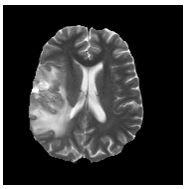Cancer/Tumor
MRI Knowledge Hub
What is Cancer
Tumors are illnesses that occur when changes in a group of ordinary cells within the body cause uncontrolled, atypical growth, resulting in a lump called a tumor. Tumors can form and spread into adjacent tissue or to different parts of the body through the circulatory and lymphatic systems, affecting the digestive, neurological, and circulatory systems if left untreated. Tumors can be divided into three groups: benign, premalignant
and malignant.
Behaviour of Benign tumors:
Benign tumors are not malignant and pose a low risk of death. They grow slowly, do not spread to other areas of the body, and are composed of cells that are very similar to normal or healthy cells. Only if they get very large, painful, or impinge on other organs, such as a brain tumor inside the skull, will they become a problem.
Behaviour of Premalignant:
Cervical dysplasia, lungmetaplasia, and leucoplakia are examples of premalignant conditions thatare not cancerous but have the potential to become cancerous over time in many years.
Behaviour of Malignant tumors (cancer):
Malignant tumors develop more quickly than benign tumors and have the ability to spread and damage tissue around them. Malignant tumor cells can break out from the original (primary) tumor and move to other areas of the body, a process called metastasis. They continue to divide and involve healthy tissue at the new location. Metastases are the secondary areas where cancer has spread, and the condition is known as metastatic cancer.


References
- Jain AK and Dubes RC. Book “Algorithms for Clustering Data”. New york: Prentice-Hall,1988.
- Hall L, Bensaid AM, ClarkeLP, Velthuizen RP, Silbiger MS and Bezdek JC. “A comparison of neural Network and Fuzzy clustering techniques in Segmenting Magnetic Resonance Images of the Brain”. IEEE Transactions of Neural Networks, Vol. 3, No. 5, Sept 1992.
- Kohonen T. “An Introduction to neural computing”. IEEE Neural Networks, 1988, Vol. 1, 3-16.
- Carpenter GA and Grossberg S. “The art of adoptive pattern recognition by self-organizing neural network”. IEEE Computer, March 1988, 77-88.
- Bezdek JC and Hall LO. “Review of MR image Segmentation techniques using pattern recognition”. Medical Physics, Vol. 20, No. 4, pp. 1033-1048, March 1993.
- Vinod VV, Chaudhury S, Mukherjee J and Ghose S. “A Connectionist approach for clustering with applications in image analysis”. IEEE Transactions on Systems, Man, and Cybernetics. March 1994, 24 (3) pp.365-384.
